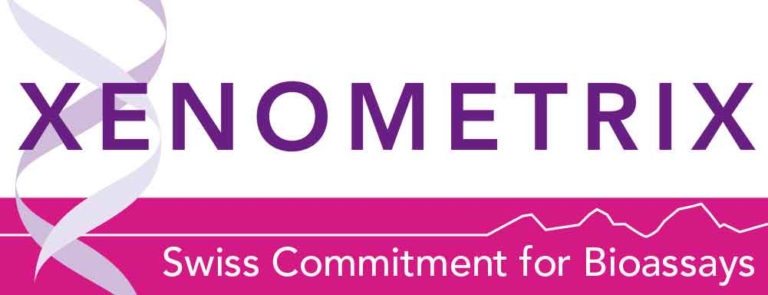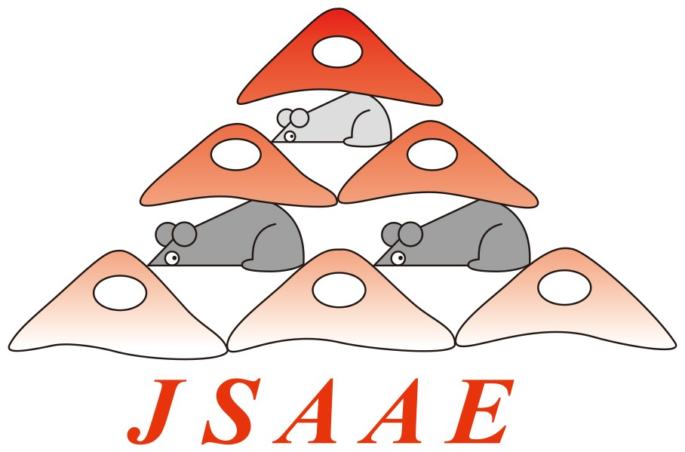ESTIV STATUTES
Section 1 – Name and registered office
The society bears the name: EUROPEAN SOCIETY OF TOXICOLOGY IN VITRO.
Its registered office is located in the municipality of Oss, The Netherlands.
Section 2 – Objectives
The objectives of the society:
(a) to improve the knowledge and mechanistic understanding of adverse effects of chemical compounds at the cellular and subcellular level;
(b) to apply the knowledge mentioned under (a) for the validation and regulatory application of non-animal toxicity test methods, and to take any and all action which relates to these objectives or might contribute to them.
The society will endeavour to achieve these objectives by:
- focussing its activities on basic science in the field of in vitro toxicology and the development of new in vitro methods and strategies;
- promoting the regular exchange of information exchange on in vitro toxicology through meetings, conferences, workshops, bulletins, e-mail listings and an internet site;
- encouraging and extending research in the field of in vitro toxicology in Europe;
- encouraging education and training in in vitro toxicology at all levels in Europe;
- cooperating with other organizations and societies concerned by in vitro approaches to toxicology;
- providing a forum for communication among professionals in government, businesses, academia and other segments of society;
- organizing any other activities which might support the above objectives.
Section 3 – Membership
- Both natural and legal persons who share the stated objectives of the ESTIV and are interested in in vitro toxicology shall be eligible for membership. Membership will be in the name of the natural or legal person and cannot be transferred. If a member (a legal person) is involved in a merger or separation and as a result of this ceases to exist, its membership will not be transferred to the legal person entitled to acquire it nor, in the case of separation, to the legal person designated to acquire it on the basis of the separation settlement.
- Members will be persons who have applied to the executive board and were accepted to the society by the executive board. In the event of non-acceptance by the executive board, the general assembly may still decide to accept a membership.
- The general assembly, on recommendation by the executive board, can appoint a member as honorary member on the basis of extraordinary merits in the pursuit of the aims of ESTIV as laid down in section 2. Honorary members will have the same rights and obligations as regular members. However, honorary members will not have to pay any contributions.
- The secretary of the executive board will keep a members’ register in which the names and addresses of the members have been recorded. If a member has agreed to a notification of the general assembly by electronic means, the e-mail address provided by the member will also be recorded in the members’ register.
- A member can be temporarily suspended by the board for a maximum period of three months if he or she has committed a severe violation of the articles of association of ESTIV or of public honour and decency. During this period of suspension, the member in question will not be able to exercise his or her rights in connection with his or her membership. His or her obligations based on his or her membership will continue to exist.
- Within a month from the notification of the decision to suspend a member, he/she may appeal this decision with the general assembly and defend himself or herself. Within four weeks of receipt of the writ of appeal, the executive board will be obliged to convene a general assembly. During this appeal period and pending the appeal the member will remain suspended.
Section 4 – Termination of membership
- Membership will terminate as a result of:
a. the death of a member; if a legal entity is a member of the society, its membership will end when it ceases to exist, even if this cessation is based on a merger or separation;
b. resignation of a membership;
c. cancellation of a membership;
d. discharge. - Membership may only be resigned at the end of the fiscal year, on condition that this resignation is made in writing and taking a notification period of at least one month into consideration. Membership resignation can take place with immediate effect if in all fairness it is impossible for the membership to continue. The member in question will, however, be obliged to pay his or her membership for the current year.
Late resignations will result in membership – including any and all rights attached to it – terminating only at the end of the subsequent fiscal year, unless the executive board approves a different resolution based on extraordinary circumstances.
Members will not have the right to resign their memberships if resolutions regarding the increase of their financial obligations are approved, except for the case described in the paragraph below.
Members may resign their membership with immediate effect within a month of notification in case the society will be transformed into another legal entity, or subjected to a merger or separation. In this case, members will be obliged to pay the membership fee set for the current year. - Cancellation of membership by the executive board will be made in writing to the member in question stating the reason(s) for the cancellation. Cancellation is possible:
- if a member no longer fulfils the requirements for membership as stipulated in the articles of association;
- if a member – despite having been requested to do so in writing – does not meet his or her obligations vis-à-vis the society; or
- if the society in all fairness can no longer continue to maintain the membership.
- The date for termination of membership will be set together with the decision for cancellation. The contribution for the current year will, however, remain due.
- Discharge of membership will take place by the executive board by means of a written notification sent to the member stating the reason(s) for the discharge. Discharge will only be possible if the member acts or acted in violation of the articles of association, the rules and regulations of the society or the resolutions passed by the society; or if the member in question harms or harmed the society unfairly. Discharge will come into effect immediately. The contribution for the current year will remain due.
- Within a month of notification of cancellation or discharge, the member in question may appeal this decision to the general assembly in order to defend himself or herself. To this end the executive board will be obliged to convene the general assembly within four weeks of receipt of the appeal. During the appeal period and pending the appeal, the member whose membership has been cancelled will be suspended.
- The obligation to notify in writing the termination (i.e., resignation, cancellation and/or discharge) of a membership is not fulfilled when the termination or notification of termination was communicated by electronic means.
Section 5 – Sponsors
- Sponsors are legal or natural persons who have been accepted by the executive board. There may be different categories of sponsors.
Sponsors will be bound by the articles of association, the rules and regulations of the society and the resolutions approved by the society. They only have access to the general assembly if the assembly approves a resolution to this effect. They will not have any voting rights. - The rules described in the articles of association on both acceptance and termination of memberships and their consequences will, insofar as possible, also apply to sponsors.
- The general assembly will set the minimum amount to be paid by sponsors to the society, either per fiscal year or as a one-off sum.
Sponsors may be obligated to make arrangements with their bank for periodic payments. The minimal contribution can vary per category of sponsors. - The secretary will keep a register which details the names and addresses of sponsors.
Section 6 – Membership contributions
- Members shall pay an annual membership fee; the amount will be set by the general assembly. Members can be divided into different categories and may therefore pay different levels of contribution.
- The executive board will have the right to fully or partially discharge a member from paying his or her contributions for a given period.
- The general assembly can decide on the possibility to pay the annual contribution in parts and may therefore impose associated conditions.
Section 7 – Executive board: composition and appointment
- The society will be governed by an executive board composed of at least six but no more than twelve natural persons referred here as ‘officers’.
The general assembly will set the number of officers within the executive board.
The executive board will have a president, a secretary and a treasurer.
The executive board will divide roles and responsibilities amongst themselves, but the general assembly may reserve the right to appoint the president of the executive board.
The positions of secretary and treasurer may be held by the same person.
For each officer, the executive board can appoint a deputy; in the case of absence or unavailability, he or she will hold the position of the person of whom he or she is the deputy.
Even if not fully constituted, the executive board will remain competent.
The executive board will take all necessary measures to fill vacancies as soon as possible when applicable. - The general assembly will elect the officers of the executive board and appoint its chairperson. This election will be based on members of the society or the directors of the legal entities which are members of the society.
- The election of members of the executive board will be made on the basis of a list of recommendations prepared by the executive board. The list of recommendations will, however, not be binding.
- a.) Officers of the executive board will be appointed for a period of four years and will leave their functions in accordance with a schedule to be drawn up by the executive board. An officer from the executive board leaving its functions according to the schedule may be reappointed only once. However, the function of the president is limited to four years. The executive board can decide that a first term which, on the basis of the schedule, is less than four years, may not be taken into consideration. An officer who cannot be immediately reappointed may only be reappointed to the executive board once a period of four years following his or her term has expired.
- b.) An officer of the executive board appointed to an interim vacancy will take the place in the schedule of the person to whose position he or she has been appointed. If, as a consequence of this, the first term of the person appointed to this vacancy is less than four years, the executive board can decide not to take this term into consideration, and this in application of paragraph (a) of this section.
Section 8 – Executive board: termination of position; suspension
- The term of officers appointed to the executive board will end if:
- an officer of the executive board resigns;
- the period for which the officer of the executive board has been appointed expires;
- an officer of the executive board dies;
- an officer of the executive board is placed under legal constraint or supervision of his or her entire assets;
- the officer of the executive board is no longer a member of the society;
- the officer of the executive board no longer meets the requirements described in section 7 paragraph 2 in order to be appointed as a member of the executive board;
- if the officer of the executive board is discharged on the basis of a resolution passed by the general assembly with a majority of at least three quarters of the votes cast;
- the officer of the executive board is declared insolvent, is subjected to a debt settlement or is placed under a moratorium of payment; all of this taking the following into consideration.
- An officer of the executive board may be temporarily suspended by the general assembly at any time. This suspension must be based on a resolution passed with a majority of at least three quarters of the votes cast.
The temporary suspension will have a duration of at least three months and can last until the next face-to-face general assembly. If the suspension is not followed by a discharge, it will end upon expiry of this period. The officer of the executive board will be given the possibility to defend himself or herself at the general assembly in question and can be counselled and assisted by a lawyer.
Section 9 – Executive board: notice, meetings, decision making
- Every officer has the right to convene a meeting of the executive board.
- Meetings of the executive board will be notified in written, taking a period of at least seven days into account, excluding the date of both the notice and the meeting, and mentioning the date, the starting time, the location of the meeting and the issues to be discussed (agenda). The officer of the executive board who, for notification purposes, provided the society with an address can be invited to the meeting by means of a legible and reproducible electronic mail sent to this address.
- Meetings of the executive board will be held in a location proposed by the person convening the meeting and agreed by the majority of the officers.
- If a meeting takes place using procedures which differ from the ones stipulated in paragraphs 2 and 3 above, the executive board may nevertheless pass valid resolutions if all officers are present or represented at the meeting.
- An officer may provide another officer with a power of attorney to represent him or herself at the meeting. A power of attorney sent by e-mail will be regarded as a written power of attorney. An officer may represent only one other officer at meetings of the executive board.
- During meetings of the executive board, each officer will have one vote.
Insofar as these articles of association do not prescribe a larger majority, resolutions will be passed by a majority of the votes casts. In the event of a tie, the president will have the casting vote.
Section 10 – Executive board: direction, minutes, decision-making outside of meetings
- Meetings of the executive board will be chaired by the president; in the event of his or her absence, the executive board will appoint another chairperson.
- The chairperson will determine the way in which votes are cast.
- The opinion of the chairperson on the result of a vote will be decisive.
If the accuracy of the chairperson’s opinion is immediately disputed, a new vote will be held. For this purpose, a majority of the officers present is needed to recall the decision of the chairperson and lead to a new vote. If there was no original vote (by call or in written), then one officer with voting rights can ask for a new vote. On the basis of the new vote the legal consequences of the original vote will become null and void. - Items discussed during the meetings of the executive board will be recorded in minutes taken by the secretary or a person appointed by the chairperson of the meeting.
Once the minutes of the meeting have been approved by the executive board, they will be signed by both the chairperson and the person who has recorded the minutes. - The executive board will be able to pass resolutions outside of the meeting if all officers agree to the motion in question.
‘Written’ statement comprises also legible and reproducible e-mails to the addresses communicated by the executive board officers to the society’s secretariat and which are known to all officers
Section 11 – Executive board: duties and competences
- The executive board will be entrusted with managing the society. Officers will be obliged to dutifully carry out the assignments given to them with regard to society. The executive board will be obliged to keep records of the assets of the society and of all actions taken in connection with the society’s activities, thereby meeting the demands originating from these activities and keeping books, writs of proof and/or data on other media enabling the rights and obligations of the society to be known at all times. The executive board will be obliged to maintain the aforementioned books, writs of proof and other media for a minimum period of seven years.
- The executive board will be competent to enter into agreements regarding the acquisition, disposal and encumbrance of registered properties, and to enter into agreements for which the society provides a guarantee or commit itself as a liable debtor, provides support for a third party or commits itself to provide a guarantee for the debts of a third party.
The executive board will not be competent to accept inheritances unless this takes place under the beneficium of inventory. - By passing a clearly articulated resolution the general assembly may subject a specific decision from the executive board to its approval. Such resolution passed by the general assembly will be communicated to the executive board.
The absence of such request of approval does not give rights to or against third parties in case of conflict.
Section 12 – Representation
- The executive board will represent the society.
- The power to represent the society will be given to at least two officers from the executive board, one of whom must be the president, the secretary or the treasurer.
- The executive board can decide to grant a temporary or permanent power of attorney to one or several officers and/or third parties enabling them both individually and collectively to represent the society within the limits set by the power of attorney.
- The powers described in paragraphs 1 and 2 above will also apply in case of a conflict of interest between the society and one or more officers from the executive board.
- In cases where the society has a conflict of interest with one or more officers, the general assembly can appoint one or more persons to represent the society.
Section 13 – Reporting and accountability
- A fiscal year of the society will equal a calendar year.
- The executive board will draw up an annual report of the activities of the society and the policies it adopted within 6 months of the end of the fiscal year. A resolution passed by the general assembly may however extend this period. The board will present for approval by the general assembly both the balance sheet and a profit and loss statement. These documents will be signed by all executive board officers. If the signature of one or more officers is missing, the reasons for this will be mentioned.
If the society maintains one or several companies for which registration at the trade register is required by law, the net turnover of these companies must be recorded in the profit and loss statement. - The executive board will present for approval by the general assembly the documents constituting the annual report.
If no statement drawn up by an accountant is presented, as stipulated in section 2:393 par. 1 of the Civil Code, the documents will first be audited by a supervisory committee of at least two members that shall not be officers of the executive board. This committee must be appointed by the general assembly. Members may hold a position on the supervisory committee for a maximum of two consecutive years.
The executive board will be obliged to grant permission to the supervisory committee to consult both the full accounts and the associated writs of proof. The committee may be assisted by an external expert if it deems this necessary to fulfil its obligations. The committee will report its findings to the general assembly; it will also make a recommendation on the approval or rejection of the documents. Following approval of the documents constituting the annual accounts, a proposal will be made to the general assembly to exonerate the executive board from the accounts and their accountability (responsibility) in this regard. - In a meeting to be held prior to the end of the fiscal year, the executive board will draft a profit and loss statement for the following fiscal year. This statement will be drafted by the treasurer and will be sent to all officers of the executive board no later than the (end of the) November.
- The executive board will draft a plan of action and will periodically update it.
The action plan will describe the activities to be carried out by the society, its fundraising modalities, management of the assets of the society and the way in which its financial resources will be expended.
Section 14 – The general assembly: competences and annual meeting
- The general assembly will have all competences for which no impediments imposed by law exist, or which are the sole competence of the executive board according to the articles of association.
- Annually, and no later than six months following the end of the fiscal year, the general assembly – the annual meeting – will be held. A resolution passed by the general assembly may however extend this period. During the general assembly the following items will be discussed:
a. the report of the preceding fiscal year drawn up by the executive board;
b. the recommendation to accept or reject the documents constituting the annual accounts of the preceding fiscal year;
c. the recommendation to exonerate the executive board;
d. the appointment of the members of the supervisory committee for the new fiscal year;
e. the appointment of new officers, if there are vacancies on the executive board; and
f. motions made by the executive board or members of the general assembly as described in the notification of the general assembly. - No later than one month following the end of the fiscal year, the executive board will make available to the members of the general assembly the budget for the next fiscal year.
Section 15 – The general assembly: notification
- The general assembly will be convened by the executive board.
A minimum number of the society members, jointly competent for casting at least one tenth of the votes, may request in written that the executive board convene a general assembly within four weeks of the request. If the executive board does not send notification within fourteen days of receipt of this request, the persons submitting the request will be entitled to convene a general assembly themselves. The condition that the request is made in written will also be met if the request is sent by e-mail. - Notification of the general assembly will be sent in written to the addresses of the members recorded in the members register. If the society has a website the date of the general assembly must also be mentioned on it.
If a member agrees, notification can also be sent by e-mail using a legible and reproducible message sent to the address which the member in question has provided for this purpose. - Notification must be sent at least fourteen (14) days prior to the general assembly, not including the date of notification and the date of the meeting.
- Besides the location, date and time of the meeting, the notification must also include an agenda detailing the items to be discussed.
Section 16 – The general assembly: access and voting rights
- All members of the society and officers of the executive board who are not suspended will have access to the general assembly. The general assembly can also decide to allow other persons to attend / participate in the meeting. Suspended, cancelled and discharged members will be allowed to attend only that part of the meeting during which their appeal against the suspension, cancellation or discharge of their membership is discussed.
- Each regular member and each honorary member will have one vote. A suspended member will have no voting rights.
Section 17 – The general assembly: decision-making
- Insofar as these articles of association do not stipulate otherwise, resolutions will be passed by a majority of the votes cast by the members present or represented at the meeting, and this regardless of their number.
Abstentions or invalid votes will not be taken into account for decision-making resolutions but will be taken into consideration when determining any quorum required by these articles of association. - The opinion of the chairperson on the result of a vote will be decisive. If the accuracy of the chairperson’s opinion is immediately disputed, a new vote will be held. For this purpose a request by the majority of the members present is needed. If however the original vote was not cast by call or in written, then one member with voting rights can ask for a new vote. On the basis of the new vote the legal consequences of the original vote will become null and void.
- If during a vote on a motion pertaining to the election of person/persons no majority is reached during the first round, a new round will be held. If a majority can still not be reached, an additional voting round will be held on the two eligible persons that obtained the highest number of votes. In the event of a tie during a voting round on the election of a person, sortition will decide.
- In the event of a tie during a voting round on a motion not pertaining to the election of persons, the motion will be rejected.
- All votes are cast orally, unless the chairperson or at least three members request a written vote. A written vote will take place using unsigned, closed ballot sheets. Decision-making by acclamation will not be possible when a member requests a vote by call. Voting members may also exercise their voting rights electronically, on condition that the voting member in question can be identified, has access to a live stream of the discussions during the meeting and can cast his or her votes without any delay. The executive board may impose conditions on the use of electronic means. These conditions must be specified in the notification.
- A unanimous resolution passed by all members, even if not all of them are present, will have the same force as a resolution passed by the general assembly on condition that this resolution be passed with the prior knowledge of the executive board.
- If during a meeting all members can be present or represented, valid resolutions – provided they are passed unanimously – can be passed on all items discussed, even if an item was not specified in the notification, or the notification was not sent in a legally valid way.
Section 18 – The general assembly: direction and minutes
- General assemblies will take place under the guidance of the president of the executive board.
In the event of the absence of the president of the executive board, the executive board will appoint another officer as chairperson. If this is not possible, the general assembly will appoint a chairperson. - The items discussed during the general assembly will be recorded in minutes by the secretary of the executive board or a person appointed to do so by the chairperson of the meeting.
Once they have been drawn up the minutes of the meeting will be signed by both the chairperson and the minutes secretary.
Section 19 – Alteration of the articles of association
- The articles of association of the society can be altered by a resolution passed by the general assembly. If a proposal to alter the articles of association is made to the general assembly, this must always be specified in the notification.
- The members who have requested a general assembly in order to alter the articles of association must make available to other members a copy of the exact wording of the alteration (e.g., through the website and/or e-mail), and this no later than five days prior to the general assembly in question.
- Resolutions to alter the articles of association must be passed with a majority of at least two thirds of the votes cast.
- An alteration of the articles of association will come into effect immediately after a notary deed detailing this alteration has been drawn up. Each officer from the executive board will be competent to have an alteration of the articles of association recorded in a notary deed. An original copy of the deed detailing the alteration of the articles of association and the full texts of the altered articles of association must be registered at the trade register.
Section 20 – Merger; separation; transformation
Except for the requirements imposed by law the stipulations of the previous section will insofar as possible apply both to:
- resolutions passed by the general assembly on a merger or separation as detailed in chapter seven of volume 2 of the Civil Code,
- and a resolution passed by the general assembly to transform the society into another legal entity in accordance with article 2:18 of the Civil Code.
Section 21 – Dissolution
- The society can be dissolved by a resolution approved by the general assembly. The stipulations regarding the alternation of the articles of association will also apply to a resolution regarding the dissolution of the society.
In the event of a resolution to dissolve the society, the modalities of using possible asset surpluses will be determined.
If, at the time of dissolution, the society no longer has any surpluses, it will cease to exist. In this case the executive board will report this to the trade register.
The accounts and documents of the dissolved society will be kept by a person appointed by the board when the resolution to dissolve the society is passed, and this for the period required by law. Within eight days of the commencement of his or her obligation to keep both the accounts and documents of the society the person appointed to do so must report his or her name and address to the trade register. - The society may also be dissolved as a result of:
- insolvency following a declaration of bankruptcy, or if the society remains insolvent due to the state of its assets;
- a court order to this effect imposed by law.
Section 22 – Liquidation
- The executive board will be entrusted with liquidating the assets of the society insofar as no other liquidator(s) were appointed in the resolution to this effect.
- Following the resolution to liquidate, the society will go into liquidation.
Following its dissolution, the society will continue to exist insofar as this is necessary for the liquidation of its assets.
During liquidation the stipulations of the articles of association will remain in force for as long as possible and necessary.
The mention ‘gone into liquidation’ must be added to the name of the society on all documents and announcements drawn up and made by the society. - Any surplus following liquidation will be allocated for a purpose corresponding as far as possible to the objectives of the society.
This purpose will be determined when the resolution to dissolve the society is passed, or, in the absence of such a resolution, by the liquidator(s). The liquidation will end when the liquidators no longer have any knowledge of any further surpluses. The society will cease to exist when the liquidation ends. The liquidators will report this to the trade register.
Section 23 – Rules and regulations
- The general assembly can determine one or several rules and regulations.
- These rules and regulations can provide directives on membership, the acceptance of new members, the membership fees, the work of the executive board, the creation of working groups and committees, the organisation of meetings.
- These rules and regulations must not contradict any stipulations imposed by law or by the articles of association and may not include provisions to be determined by the articles of associations.
 The ESTIV Members Area
The ESTIV Members Area



















